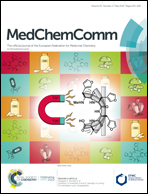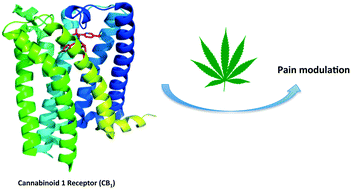“To determine the effects of cannabis, cannabinoids, and their administration routes on pain and adverse euphoria events.
Randomized controlled trials investigating the effects of cannabis or cannabinoids on pain reduction.
RESULTS:
A total of 25 studies involving 2270 patients were included. We found that delta-9-tetrahydrocannabinol/cannabidiol (THC/CBD) (oromucosal route), THC (oromucosal route), and standardized dried cannabis (with THC; SCT; inhalation route) could reduce neuropathic pain score (SMD -0.41, 95% CI -0.7 to -0.1; -0.61, 95% CI -1.2 to -0.02; and -0.77, 95% CI -1.4 to -0.2; respectively). For nociceptive pain, only standardized cannabis extract (with THC; SCET) via oral route could reduce pain score (SMD -1.8, 95% C; -2.4 to -1.2). In cancer pain, THC/CBD via oromucosal route and THC via oral or oromucosal route could reduce pain score (SMD -0.7, 95% CI -1.2 to -0.2; and -2.1, 95% CI -2.8 to -1.4; respectively). No study was observed for THC/CBD via oral route or inhalation or THC via inhalation for cancer and nociceptive pain, SCET via oromucosal route or inhalation for neuropathic and cancer pain, THC via oromucosal route for nociceptive pain, and SCT via oromucosal or oral route for neuropathic, cancer, and nociceptive pain. Statistically significant increased risks of euphoria were observed in THC/CBD (oromucosal), THC (oromucosal), and SCT (inhalation).
CONCLUSION:
The use of cannabis and cannabinoids via certain administration routes could reduce different types of pain. Product developers could consider our findings as part of their product design so that the effective route of cannabis and cannabinoids for pain control can be achieved.”
https://www.ncbi.nlm.nih.gov/pubmed/31495691
https://www.japha.org/article/S1544-3191(19)30353-X/fulltext




 “There is a growing surge of investigative research involving the beneficial use of cannabinoids as novel interventional alternatives for multiple sclerosis (MS) and associated neuropathic pain (NPP).
“There is a growing surge of investigative research involving the beneficial use of cannabinoids as novel interventional alternatives for multiple sclerosis (MS) and associated neuropathic pain (NPP).


 “Increases in cancer diagnosis have tremendous negative impacts on patients and their families, and major societal and economic costs. The beneficial effect of chemotherapeutic agents on tumor suppression comes with major unwanted side effects such as weight and hair loss, nausea and vomiting, and neuropathic pain. Chemotherapy-induced peripheral neuropathy (CIPN), which can include both painful and non-painful symptoms, can persist 6 months or longer after the patient’s last chemotherapeutic treatment. These peripheral sensory and motor deficits are poorly treated by our current analgesics with limited effectiveness. Therefore, the development of novel treatment strategies is an important preclinical research focus and an urgent need for patients. Approaches to prevent CIPN have yielded disappointing results since these compounds may interfere with the anti-tumor properties of chemotherapeutic agents. Nevertheless, the first (serotonin noradrenaline reuptake inhibitors [SNRIs], anticonvulsants, tricyclic antidepressants) and second (5% lidocaine patches, 8% capsaicin patches and weak opioids such as tramadol) lines of treatment for CIPN have shown some efficacy. The clinical challenge of CIPN management in cancer patients and the need to target novel therapies with long-term efficacy in alleviating CIPN are an ongoing focus of research. The endogenous
“Increases in cancer diagnosis have tremendous negative impacts on patients and their families, and major societal and economic costs. The beneficial effect of chemotherapeutic agents on tumor suppression comes with major unwanted side effects such as weight and hair loss, nausea and vomiting, and neuropathic pain. Chemotherapy-induced peripheral neuropathy (CIPN), which can include both painful and non-painful symptoms, can persist 6 months or longer after the patient’s last chemotherapeutic treatment. These peripheral sensory and motor deficits are poorly treated by our current analgesics with limited effectiveness. Therefore, the development of novel treatment strategies is an important preclinical research focus and an urgent need for patients. Approaches to prevent CIPN have yielded disappointing results since these compounds may interfere with the anti-tumor properties of chemotherapeutic agents. Nevertheless, the first (serotonin noradrenaline reuptake inhibitors [SNRIs], anticonvulsants, tricyclic antidepressants) and second (5% lidocaine patches, 8% capsaicin patches and weak opioids such as tramadol) lines of treatment for CIPN have shown some efficacy. The clinical challenge of CIPN management in cancer patients and the need to target novel therapies with long-term efficacy in alleviating CIPN are an ongoing focus of research. The endogenous 
 “Neuropathic pain can develop after nerve injury, leading to a chronic condition with spontaneous pain and hyperalgesia.
“Neuropathic pain can develop after nerve injury, leading to a chronic condition with spontaneous pain and hyperalgesia.
 “Neuropathic pain (NP) is associated with chronic hyperglycemia and emotional disorders such as depression in diabetic patients, complicating the course of treatment. Drugs currently used to treat NP have undesirable side effects, so research on other natural sources has been required.
“Neuropathic pain (NP) is associated with chronic hyperglycemia and emotional disorders such as depression in diabetic patients, complicating the course of treatment. Drugs currently used to treat NP have undesirable side effects, so research on other natural sources has been required.